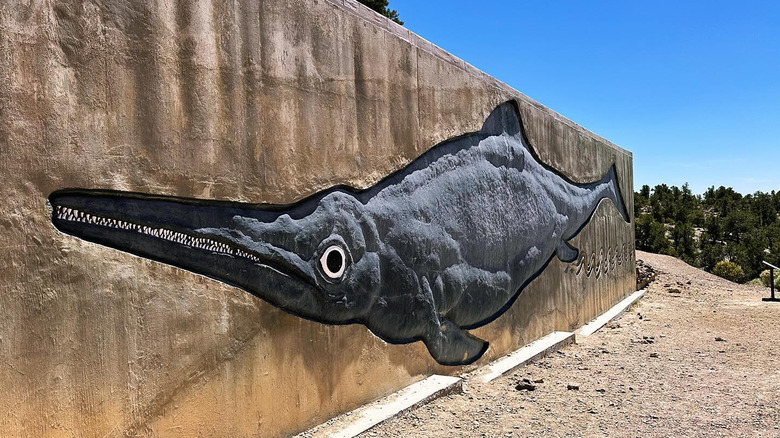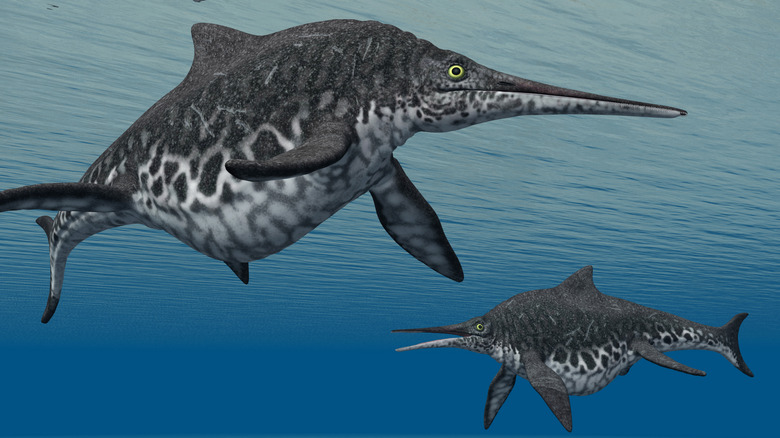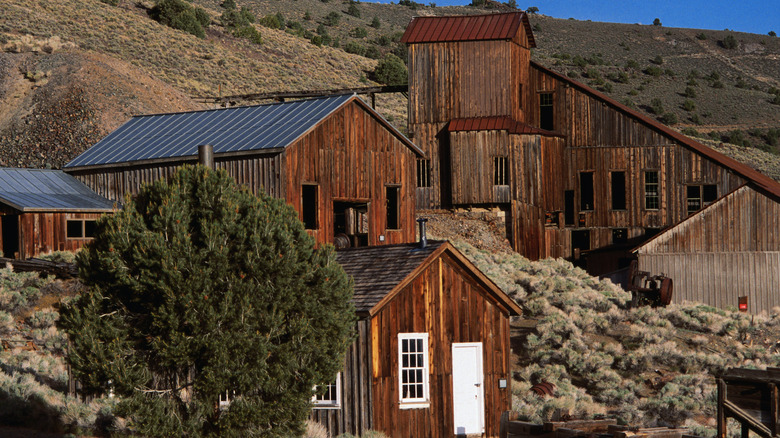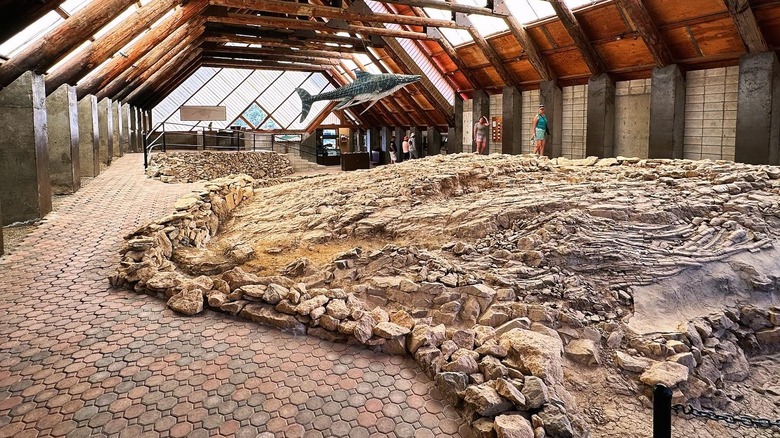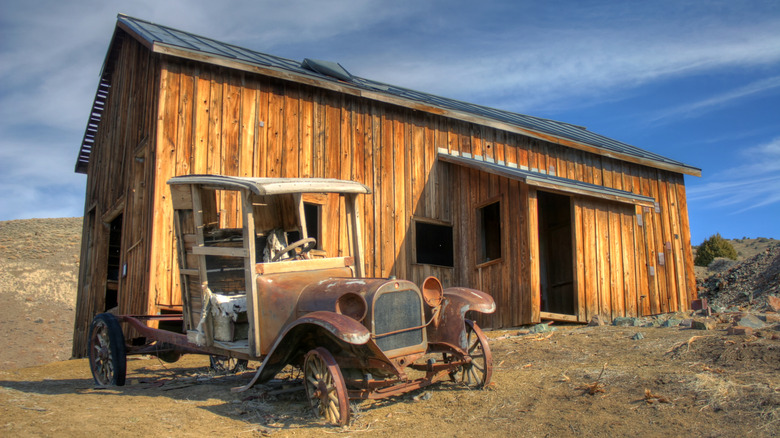Nevada's Unique Off-The-Beaten Path State Park Boasts Giant Fossilized Creatures & A True Ghost Town
Nevada's dusty desert heart holds a secret. Cradled by the rugged Shoshone Mountains and well away from the world's most stressful city to visit, Berlin-Ichthyosaur State Park is home to a long and varied history of creatures — both humans and beasts. Here, time seems to fold in on itself as the apex predators of the modern age (namely, us) meet the giant reptiles of the past on turf these animals inhabited 225 million years ago.
Berlin-Ichthyosaur State Park is renowned for hosting North America's greatest concentration of large ichthyosaur fossils. Until 2004, this location also held the record for being the site of the largest ichthyosaurs ever found. In a strange twist of circumstance, the "Berlin" part of Berlin-Ichthyosaur State Park refers to a mining town that still survives in the rusted nails and weathered wood of its nearby creaky old cabins. Together, the contours of Berlin-Ichthyosaur State Park make it a unique destination unlike anywhere else in the world.
The rise and fall of the ichthyosaurs
Nevada's ichthyosaurs have taken their rightful place in the spotlight as the major attraction of Berlin-Ichthyosaur State Park. The modern resurrection of the region's ichthyosaurs began in 1928, when a Stanford University researcher identified nearby fossils as belonging to the enormous species of marine reptiles that dominated the oceans during the days of the dinosaurs.True giants of the Triassic seas, ichthyosaurs reached lengths of up to 60 feet and weighed an estimated 40 tons. Although researchers consider them reptiles, ichthyosaurs possessed streamlined bodies, powerful tails, and flippers, which make their skeletons look more like modern dolphins or whales. Their eyes were enormous — with some sockets alone measuring up to a foot across —and likely aided them during hunts in deep, dark waters.
It wasn't until 1954, though, that the most significant research work in the area was conducted by Dr. Charles Camp from the University of California, Berkeley. Camp identified about 40 individual ichthyosaurs within a short span of ground. Terming them Shonisaurus popularis, Camp's animals were impressive both for their location in the Shoshone Mountains and the high number of creatures crammed into one space. Just a few years later, the site was officially protected as a state park, a status that it holds to this day.
Although it's far from certain why so many giant animals died together, the Smithsonian reported on recent ichthyosaur research in Nevada that found the presence of embryonic and newborn Shonisaurus at the site. These baby dinos point toward a fascinating new hypothesis: This area may have served as a birthing and nursery ground that ichthyosaurs migrated to for hundreds of thousands of years.
A preserved Nevada ghost town
Like other historic Nevada towns brimming with adventure and beauty, the Ghost Town of Berlin provides a staggering contrast to the giant swimming beasts of the ancient sea. In 1898, Berlin Mine was purchased by the Nevada Company and quickly became the economic center for the subsequent small town. The name "Berlin" was a nod to the European country that many of the miners emigrated from. At its peak, Berlin hosted around 250 to 300 individuals, which included miners, woodcutters, charcoal makers, a doctor, a nurse, families, and a forest ranger. Early settlers at the mine were likely the first people of European ancestry to stumble upon the massive, unusual bones in the hillsides surrounding the town.
Although the Berlin Mine yielded an estimated $849,000 in gold and silver from three tunnels, a worker strike in 1907 nearly shut down production. Little over a decade later, the Berlin post office closed, and the town was left to the dust and silence of the Nevada desert. Today, the Nevada State Parks describes Berlin as being in "arrested decay," a trait that makes it a "true Nevada ghost town." The transformation of the town into a hot tourist destination is evident in the more than 80 interpretive signs scattered around the quiet streets.
Visiting Berlin-Ichthyosaur State Park
To get to the Berlin-Ichthyosaur State Park, you'll need to travel a bit off the beaten path in rugged Nevada. Sitting at an elevation of around 7,000 feet, the park is best accessed off State Route 844 near Gabbs, and can be difficult to access in the winter due to high snow levels.
Perhaps the most jaw-dropping feature about this state park is the decision of Camp's team to leave the ichthyosaurs' skeletons embedded in the original rock layers they were found in. A large Fossil House was built over the main quarry to protect the exposed remains from the elements. This intentional choice allows visitors to see for themselves exactly where these incredible animals died and imagine the immense geological processes that preserved them for millions of years.
To explore both timelines of Berlin-Ichthyosaur State Park, guests can take the self-guided walking trail around Berlin and read signs about life in the mining town. A short nature trail connects the town with the Fossil House, where travelers can explore its artifacts and dinosaur skeletons on their own or as part of a guided tour.
Other things to do around Berlin
If you're interested in seeing other natural landmarks and climbing through rugged Nevada terrain to breathtaking mountain views, Berlin-Ichthyosaur State Park is conveniently located within a beautiful outdoor landscape. The park hosts a campground with 14 sites suitable for tents or smaller RVs. Each camping space includes a shaded picnic table, fire ring, and grill with nearby public outhouses and drinking water (available seasonally). Similar to a secret Nevada canyon with natural hot springs and wild desert beauty, light pollution at Berlin is minimal, and visitors staying overnight can enjoy unparalleled stargazing in the dark sky. For another great stargazing option, see this desert town in Nevada with a rich history and surreal art.
This isolation, though, means that campers — and even day hikers or park tourists, for that matter — need to come prepared. The closest town is Gabbs which sits about 20 miles away. Cell service is typically available at the campground, but it's better to be safe than sorry when planning for supplies.
Regardless of additional plans, Berlin-Ichthyosaur State Park is a desert gem that shouldn't be missed, even if you're relatively uninterested in Old West mining towns or fossils. At the very least, the incredible prehistoric animals on display represent how long life has been around in the now desolate area. At the end of the day, retracing the footsteps of 19th-century prospectors offers a surprising sense of connection to the dusty land that was once a thriving ocean brimming with sea monsters and lizards.
